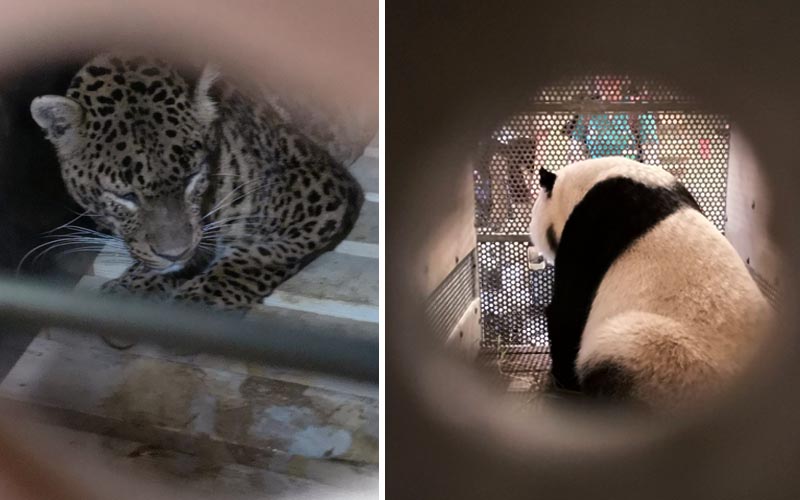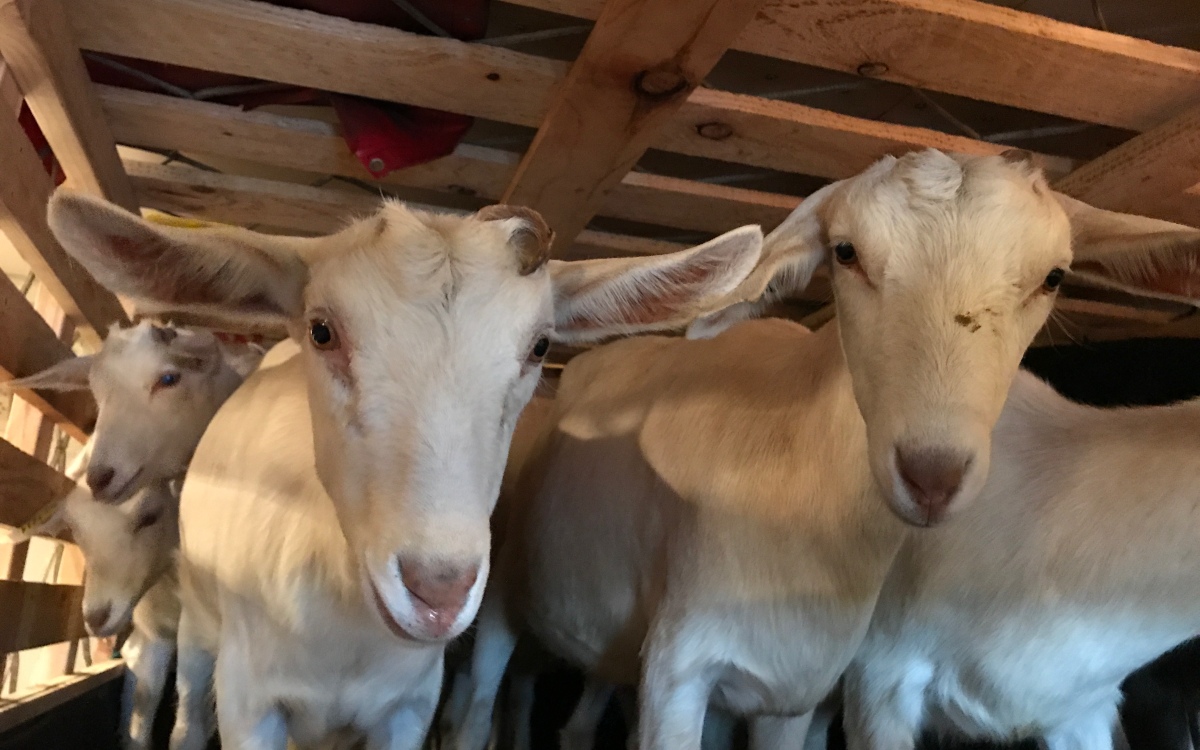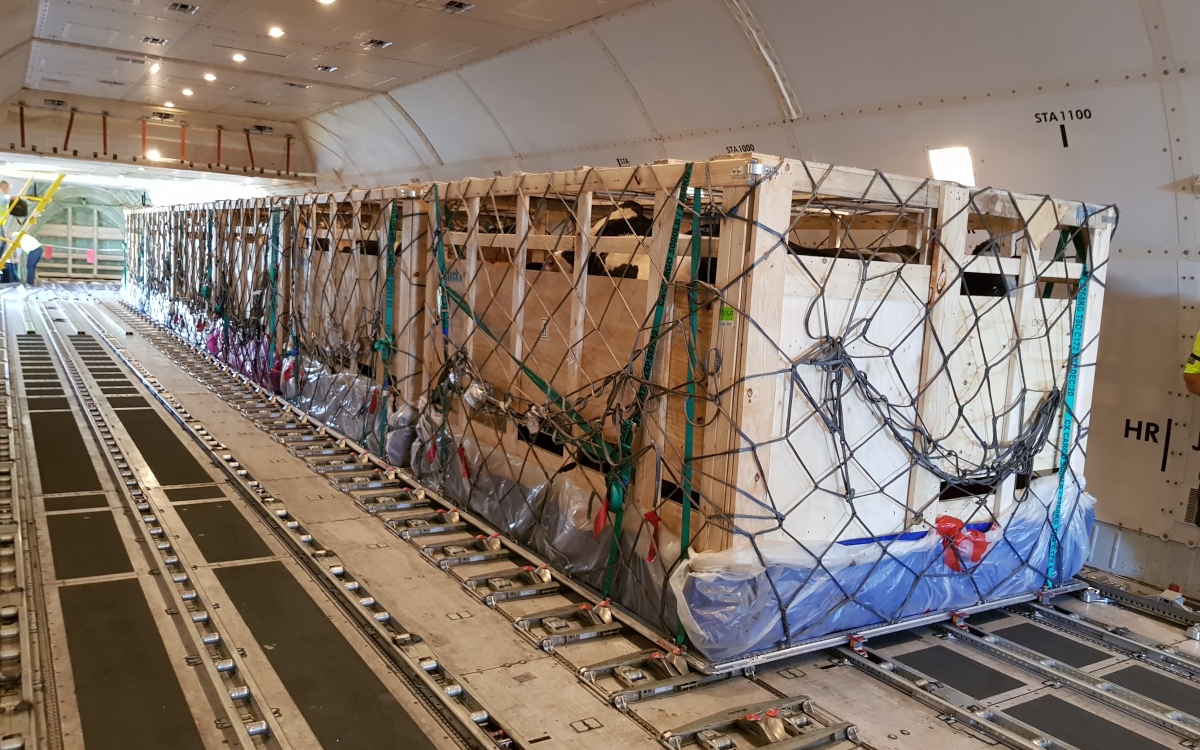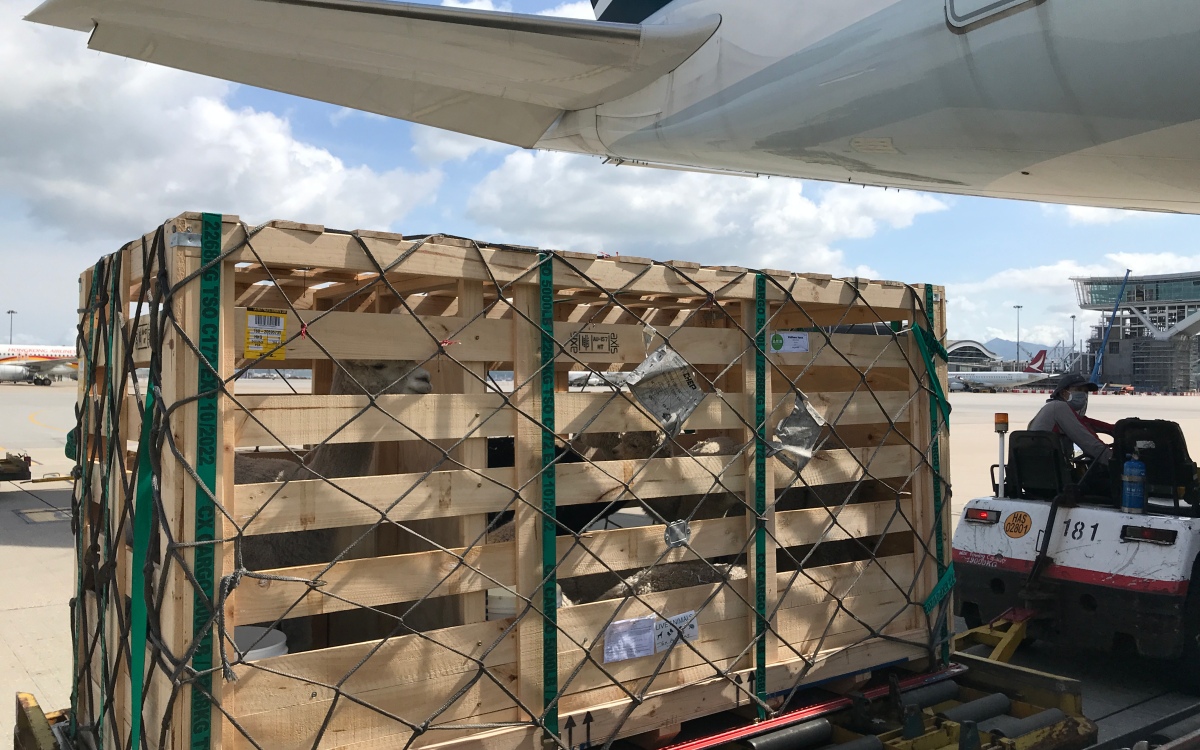‘The important thing is that we are all animal lovers,’ says Frosti Lau, GM Cargo Service Delivery at Cathay Pacific. It’s a simple starting point for shipments that are anything but.
‘Shipment care has always been front of mind for us and live animals are sentient beings and they will experience some unfamiliar sensations when they travel with us,’ Lau adds. ‘That’s where it all starts: our instincts are not just about animal welfare, but also their safety and comfort as we understand it.’
After all, animals come in all sorts of shapes and sizes, and each has different considerations and requirements. What’s good for a rare leopard on a trip between zoos as part of a breeding programme is not necessarily what’s good for a herd of goats, or some of the world’s most valuable horses, or even hundreds of trays of day-old chicks. ‘Each animal has different characteristics,’ says Nadeem Khan, Cargo Services Development Manager, ‘so we have dedicated acceptance guidelines for each type of animal, and they need to be handled in totally different ways.’

Preparation is all. The Cargo team has created a checklist for shippers to get as much information about the animals as possible before a booking, and to ensure that shipments will meet the guidelines of the IATA Live Animal Regulations – plus the airline’s own guidelines, as well as the national laws at origin and destination, which vary in their stringency across the globe. But the overall aim is to maximise the safety and comfort of our animal passengers. ‘This means we can work through any concerns ahead of acceptance,’ says Khan.
Expertise comes from experience – for example, after shipping 12,000 goats in the past year, Khan knows their foibles well. But the team also learns from best practice across the industry and even monitors the media to keep up to date. ‘We are actively hungry for information,’ says Khan, ‘so that we keep learning and keep improving.’

This task is also being accelerated as Cathay Pacific Cargo streamlines and focuses its policies and processes not just because of the growing demand for animal shipments, but also in preparation for IATA’s CEIV Live Animals certification, which the airline is likely to receive before the end of the year. This is a further demonstration of the airline’s commitment to quality and continuous improvement to animal shipments. ‘We also feedback our experience to IATA so that it continues to enhance the Live Animal Regulations,’ adds Lau.
There’s a dedicated working group for animal shipments, involving teams from across the business. Typically this involves the planning and commercial teams from Cargo, along with Engineering and Flight Operations among others. ‘The commercial team will then present the shipper with the inclusions in the contract that we want to have, to clear up doubts,’ says Khan. ‘We will also involve the teams at origin and destination to ensure they know what’s coming and that the paperwork and facilities are prepared.’
Animals on board
On board the aircraft there are many considerations. Snakes on a Plane is a great title and premise for a film, but loose animals are a danger to themselves and the aircraft. That makes the shipping crate very important.
Not only is it ‘the animal’s seat’, as Khan puts it, but there is no standardised load device for some animals: many need to be custom made. They need to be sufficiently robust, with more reinforcement for a rhino than a goat, for example – and each design also has to fulfil many criteria of welfare, safety and comfort. Ideally, they need to be self-contained to prevent leakage. This isn’t just about post-flight cleaning and hygiene: excessive ‘spillages’ are potential maintenance issues.
‘Sometimes we will ask the customer to modify the crate to create a safer and more comfortable journey for the animals’ says Khan. ’Shippers appreciate this sort of feedback because it’s better for the animals.’
Operationally, there’s a lot to think about, and this is why the flight and engineering teams get involved too. ‘One of the main issues is that mammals generate heat and humidity, so there are limits on how many of a particular species can be carried,’ says Stu Baker, Deputy Chief Pilot (Boeing), and a member of the working group (second from left, below, on board with a goat shipment).

Prior to accepting a livestock shipment, Cargo Planning ensure that the aircraft is capable of carrying the planned number of livestock. A crucial element of this is to ensure that the aircraft’s air-conditioning system can keep the livestock at the requested temperature.
‘We coordinate very closely when there are livestock shipments with the Cargo team,’ says Baker. ‘The aim is that our pilots never turn up at the aircraft not knowing they’ve got livestock on board. They’ll be briefed about getting the aircraft set to the right temperature because every animal is different. If we have dairy cattle the shippers usually request a temperature of around 22 degrees, pigs tend to be between 18 and 20 degrees, and racehorses like 15 degrees.’
This temperature sensitivity also requires coordinating with the Integrated Operations Centre (IOC) to ensure they make available an aircraft which has all of its air conditioning packs operational, and the APU (auxiliary power unit) in the tail working to power them on the ground during loading and unloading. Any defects here may be a ‘no-go’ issue for an aircraft laden with general cargo, but with livestock, it’s now a mandatory consideration, Baker notes.

Thinking animal-first
The cross-airline working group’s involvement with animal shipments has led to something of a continual improvement of freighter operations with animals on board, and some of these are factored into sim training for pilots, according to Baker.
‘We realised that there are all sorts of things we could do in terms of comfort,’ he says. ‘We use lower auto-brake settings on landing, so the aircraft won’t decelerate as quickly on landing. We use a bit more runway, but we know that’s better for animals that may be standing during landing.’
Then there is preparation for those situations when the unexpected may occur. ‘I don’t know any other airline that actually has introduced decision-making and prioritisation where possible for the welfare of livestock when there’s an emergency on board,’ he says.
Take depressurisation as an example. Even if there were oxygen masks on the cargo deck, goats wouldn’t be able to put them on themselves. ‘We have now started to introduce considerations for pilots, during emergency procedures, to maintain acceptable levels of oxygen for the livestock on board,’ he says. ‘If we had a depressurization event in a freighter, we would normally descend to about 25,000 feet, put oxygen masks on and make a decision on appropriate diversion ports. Now we say to the crew: consider descending lower, if terrain isn’t an issue, and maintain a lower cabin altitude to help with animal welfare.’
Pilots are responding and they take pride in what they carry, especially racehorses. Baker recalls carrying some of the great Coolmore breeding stallions, Galileo and So You Think: taken together, they were worth more than the Boeing 747 freighter they flew on. Baker’s colleague and fellow pilot Flight Operations Risk Manager Pete Hudson says that he can sometimes feel his equine charges kicking their stalls through the control column. ‘It’s their way of telling me it’s time to send the groom down to look after them,’ he says.

And as with proper VIPs, Khan’s team will ensure that boarding and disembarkation are as stress-free as possible. ‘Live animals are last to board and first off,’ he says. After a gentle 5kph tow to the terminal, off they go to their next destination – and the team debriefs to work out how to make the next journey even better.
To learn more about Live Animal LIFT, click here.








